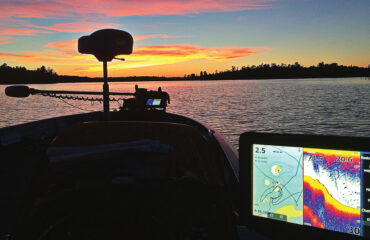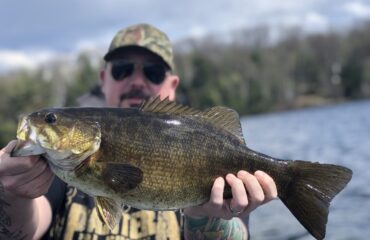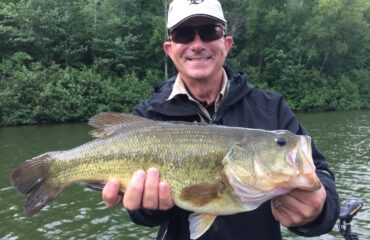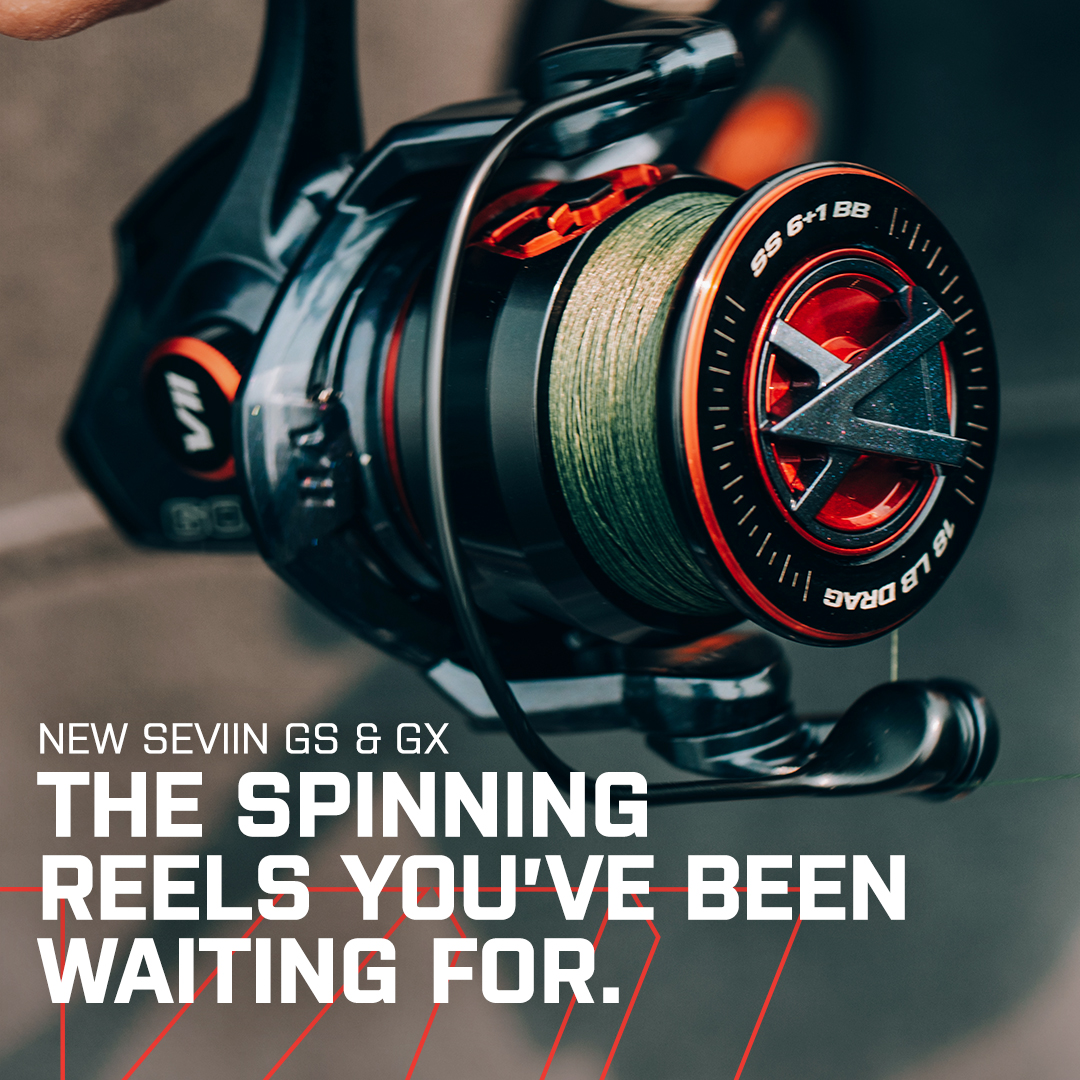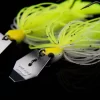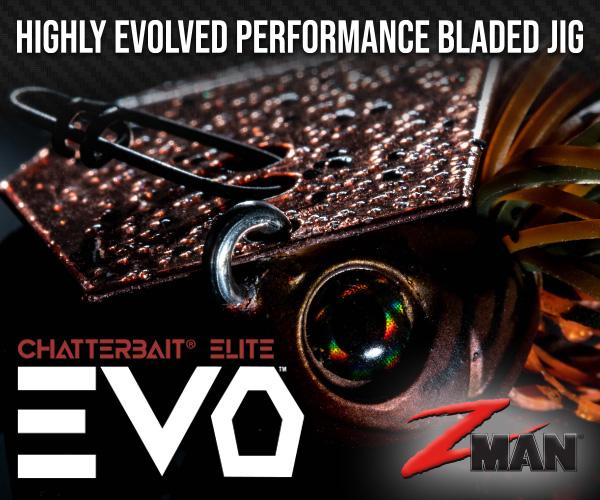Horizontally September
As water temperatures gradually cool, the lakes eventually turn over, and smallmouths slide deeper to the point of wintering, the tackle box closes. As these events simultaneously occur, my boat’s tackle selection lessens each week – and the majority of gear and tackle I’ve carried up to this point will no longer be needed.
Even though most lure selection dwindles down to the bare necessities of deep-divers, quick plungers, vertical hangers, bottom-huggers, and possibly even live bait rigs, I elect to continue working with a diverse assortment of smallmouth strategies as the open water fishing season concludes.
My fall season is divided into two halves: The first half is September month; The second half is October month. What occurs each month influences our locations, strategies, and lure selection.
Resulting from cooling water temperatures, smallmouths and baitfish migrate back to the shallows (some, not all). September is for fishing fast, hitting the flats, and covering large expanses of water and acreage with horizontal search lures. Most days of the week, we seldom fish deeper than 10-feet, and we keep moving until we find the big bites we’re looking for. My boat predominantly targets actively feeding fish until the lake completes its turnover cycle – most years it concludes 1st or 2nd week of October. And by then, we are done fishing shallow for the year.
How You Should Be Fishing, Until Turnover….
Covering water and fishing on the move throughout September month is all about efficiency. Horizontal presentations comprised of spinnerbaits, suspending jerkbaits, swimbaits & paddletails, swim jigs, bladed jigs (chatterbaits) and lipless crankbaits each receive considerable amounts of use until it’s turnover time.
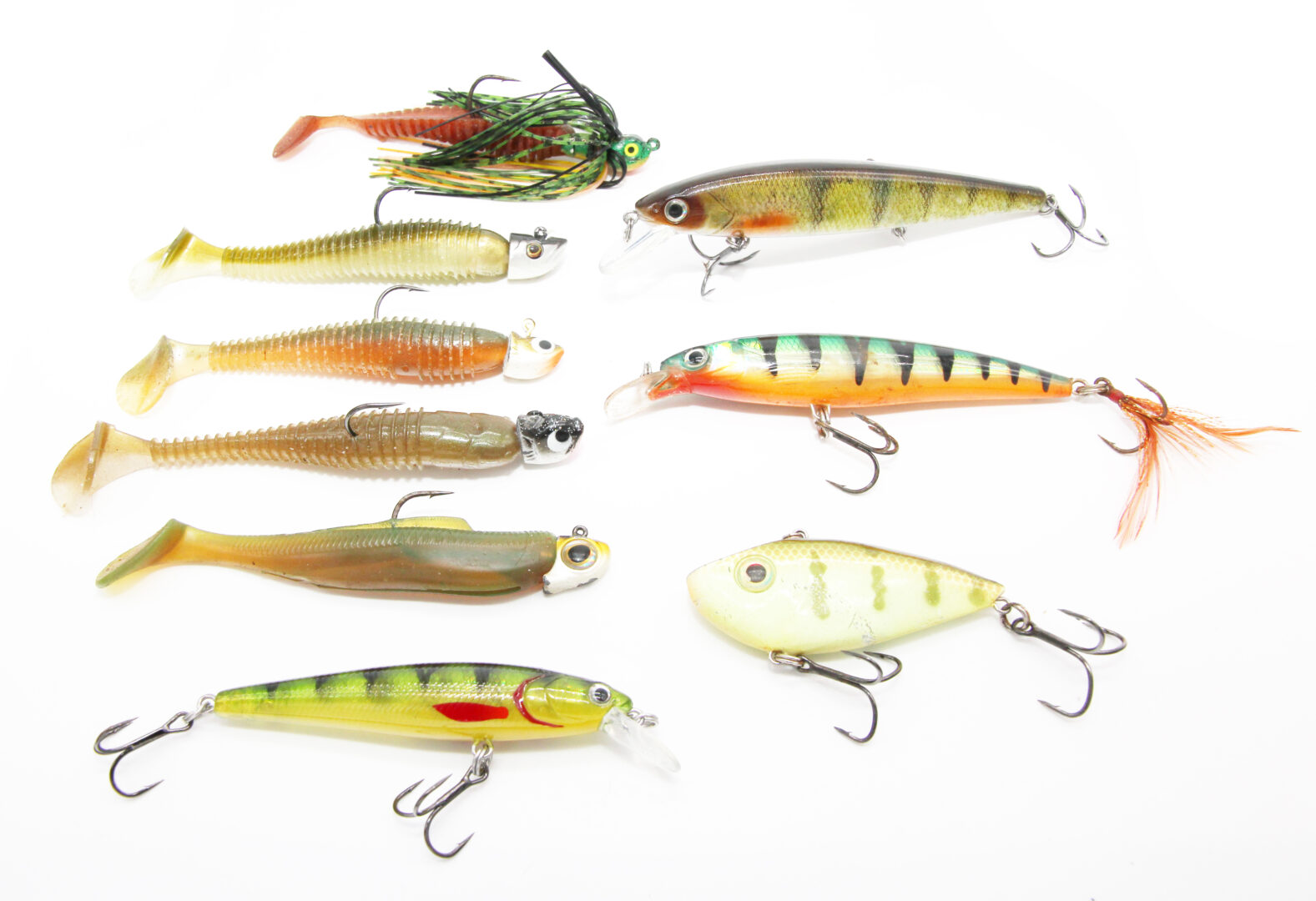
But if there is one amongst them that produces fish on a consistent daily basis, no matter the conditions and where you go, it is the paddletail. It speaks of horizontal appeal and smallmouth dominance.
In recent years, no other segment of fishing lures and bait styles have grown exponentially and diversely as paddletails and swimbaits. Many brands feature different designs and variations, models, colorways, and styles. For all of our fishing, yellow perch, natural minnow, and cisco/smelt patterns are favored.
The 3.8” Strike King Rage Swimmer annually accounts for explosive strikes, and huge numbers of smallmouth from many clear water lakes. Its thin tail produces a slow wag that’s irresistible. Keep in mind the yellow perch connection, so matching the hatch is of utmost importance. Ayu and KVD Magic are the only colors we throw. Bomb cast, and let the wagging tail and wobbles of the head do the work for you. A slow, steady retrieve is best, but I will mix it up with periodic pauses so that the bait slow-rolls back to the bottom. The key is to keep the bait swimming slowly mid-depth.
Way more durable in texture and nose segment than a Rage Swimmer, the Kalin’s Sizmic Shad 3.8” is built from more durable plastic on the body segment that holds up to multiple fish before having to retire them.
And might the smallmouths need something more durable than that, but compact, Z-Man’s 4-inch Diezel MinnowZ replicates the look, action and strike-evoking attraction of a live minnow better than any other swimmer. These bite sized paddletails, rigged up with a Z-Man Finesse EyeZ head, Northland Slurp!, and Freedom Tackle FT Swimbait Head rapidly became one of the most productive baits for my boat during the past two seasons. Their ElaZtech formulation creates a lifelike swimming action and durability. Available in dozens of colors, I gravitate to the Smelt, Ayu, and Motor Oil colors most often. They just work on every water type and clarity. The Deal is another good one. Newly released Pro Team Perch and Disco Cisco got lots of usage also, and do well wherever perch or cisco are the dominant lake forage species.
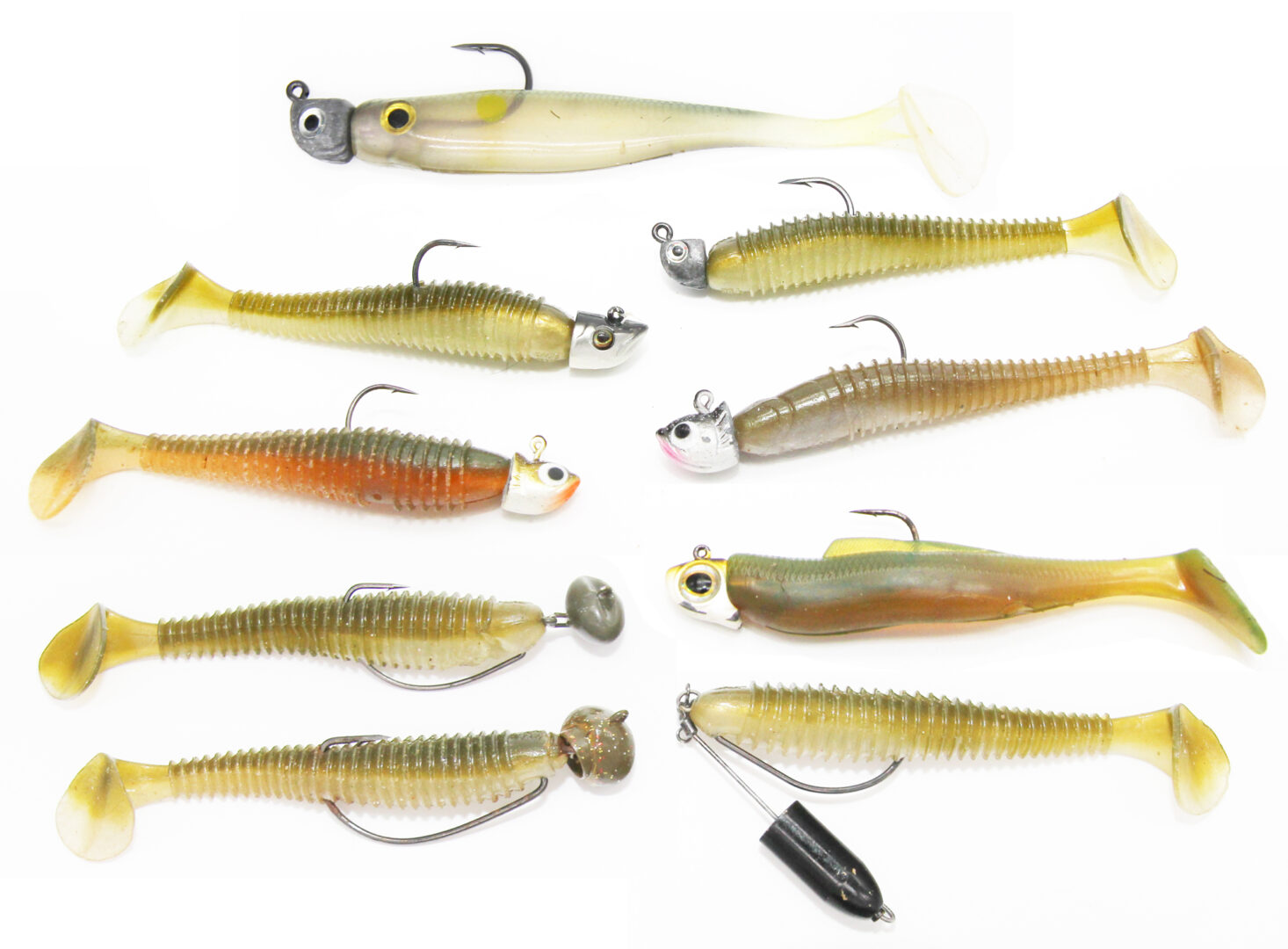
Larger baits can often entice bigger fish, and weed out the small ones. That’s the best way to describe the 5-inch Big Bite Baits Suicide Shad when rigged to the same jig heads. When big smallmouth are favoring a slightly larger swimmer profile, this combo is unbeatable.
The suicide shad is lifelike with lively tail and available in several natural baitfish and translucent colors. It’s also durable to withstand multiple bites while being hooked to the collar of your favorite swimbait jig. When the nose gets worn down and ripped off, trim the bait and continue fishing it. It will still produce just as well as a 4.5″ model, and downsized 4″ model.
Some days, smallmouth can be picky eaters, preferring only one certain paddletail while ignoring the others. Then on other days, they will showcase no behavioral or feeding judgment, hammering everything swimming past. The only constant to the strategy seems to be the ½ oz. Trokar Boxing Glove Jigs or Freedom Tackle FT Swimbait Heads we rig our swimmers to and bomb with.
And The Casting Setups
For casting, we utilize baitcasting set-ups only. St. Croix Rods manufactures an outstanding variety of rods that can be considered as paddletail rods – notably in the Victory and Legend Tournament Bass rod lineups. My boat favors 7 and a half foot lengths for long-distance casting and hook-sets that can occur anywhere within first cranks of the reel to boatside. Favorites are the Victory Max Marshal, a 7ft 5in MH Fast (VTC75MHF). It has a ton of power and flex. Another is the Legend Tournament Warhorse, also a 7ft 5in model (LBTC75MHF). Paired with SEVIIN Reels GF Series in 7.3:1 gear ratio spooled with 20-pound Cortland Masterbraid, you’ve got a powerful swimbait magic wand in your hands.
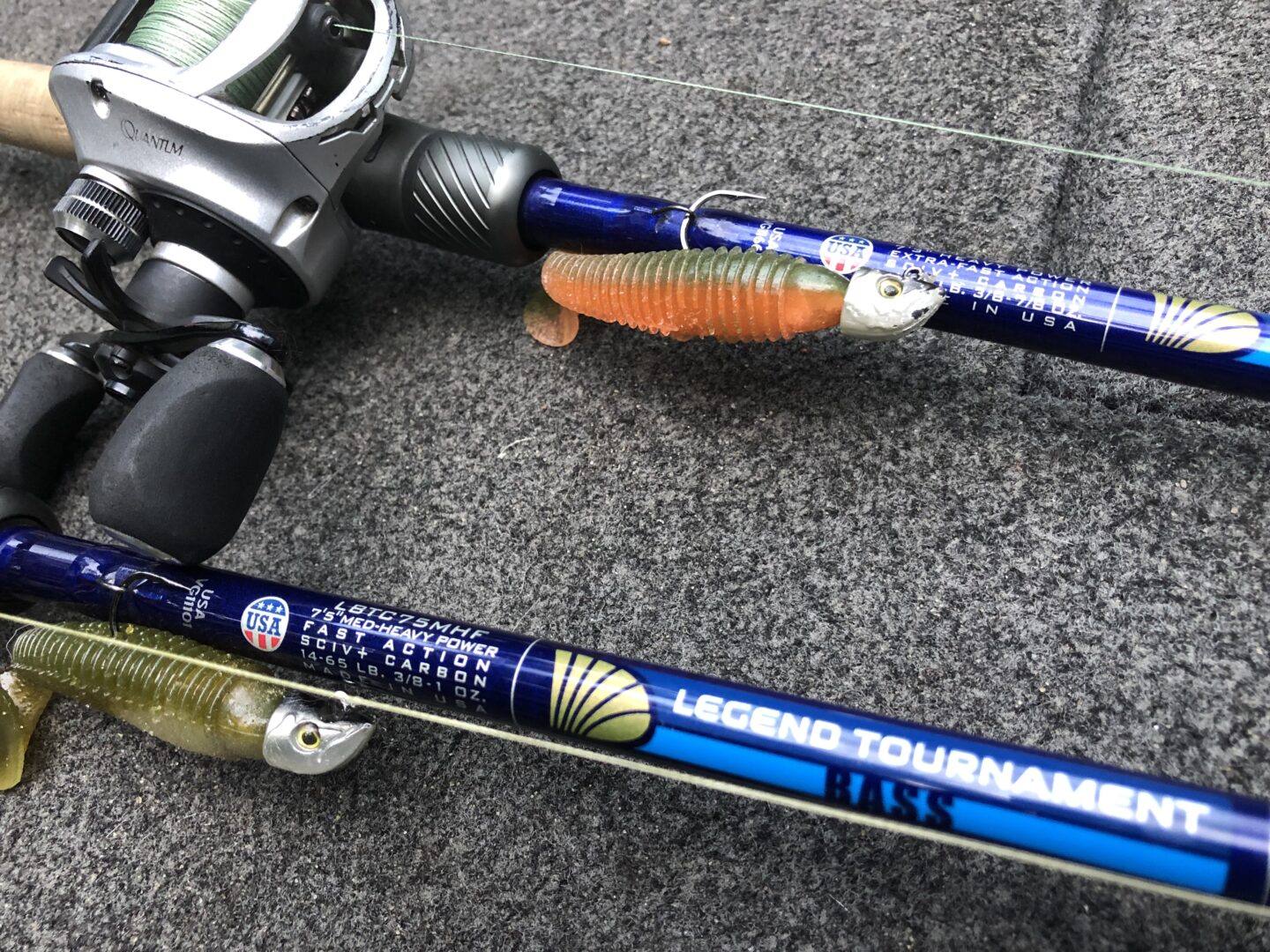
On the rig’s business end, attach a 2 to 3 ft lead of 12 lb. Cortland fluorocarbon line to keep the main line concealed and invisible. After making long casts, a steady medium retrieve speed with some intermittent rips and slow rolling is all it takes to produce strikes. Most hits come mid-retrieve and often within the first few cranks. The higher speed gear ratios and medium heavy power rods with quick taper help with long-distance hook-setting power to help drive the single hook home. Avoid retrieving swimmers too slow and never give smallmouth a good look at them. Otherwise they’ll sense it’s too artificial.
This is the boat’s daily pattern until turnover occurs. Only weather and conditions will influence the usage of the other horizontal lure options mentioned – as one should consider spinnerbaits and chatterbaits for their flash and vibration in big winds, swim jigs along deep weedlines, and lipless crankbaits under coldfronts.
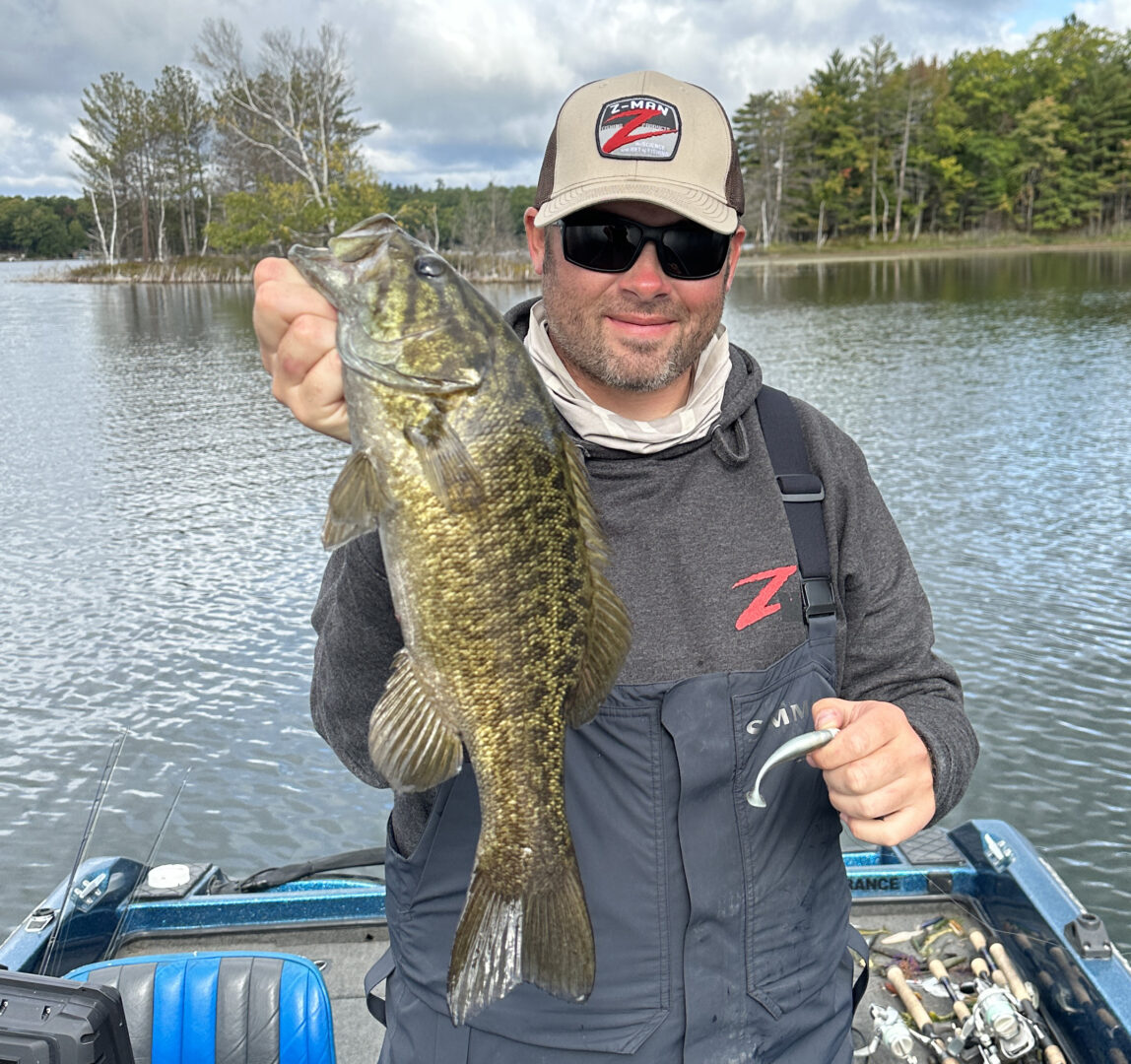
After turnover’s completion, the second half of autumn begins, which can last until whenever first ice comes along. In October – and until we call it quits for the year – our daily fishing strategy greatly contrasts to the previous weeks where precise position fishing atop deep-water structures and wintering sites with jig baits, casting deep divers, and perhaps even rigging with live bait are the winning strategies. By then, water temperatures are in the 50’s to mid-40’s, and most smallmouths are wintering, often concentrated in depths of 25-feet or more.
Check back again next month. We’ll discuss these deep, coldwater period ideas sometime in October.




